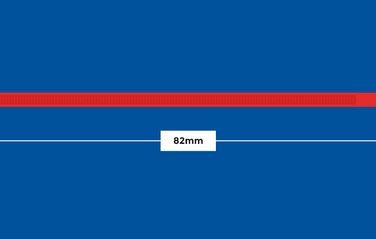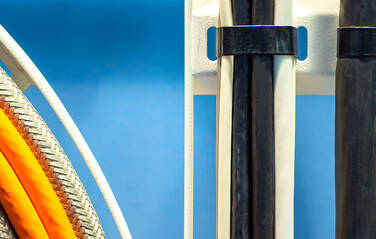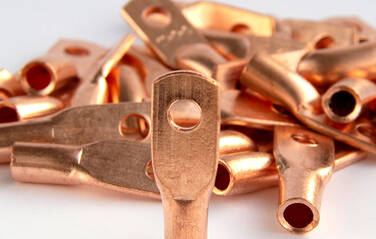Electrical components can cause confusion and in our latest guide, we look at electrical connectors and electrical terminals, the difference between them and how to use them.
What is an electrical terminal?
Electrical terminals are attached to the ends of a conductor enabling the conductor to connect to a compatible device so that electrical currents can pass through safely. Classed as an electrical accessory, a terminal forms a reusable endpoint to a conductor, allowing circuits to be connected.
Common types of electrical terminals
Cord end terminals – these are used on flexible multi-stranded wire which will be connected to a screw down terminal block
Copper tube terminals – also known as copper lugs, these heavy duty terminals are used with power cables.
Pre-insulated crimp terminals – these are used for low voltage small conductor connections. They are commonly insulated with PVC (vinyl).
What is an electrical connector?
As its name suggests, an electrical connector joins active devices to allow an electrical current to pass through. Connectors are made up of two parts – the plug in and the connector.
Common types of electrical connectors
Closed end connector terminals – used to seal or terminate stranded wiring without the use of solder, closed end connector terminals have tin plating for corrosion resistance.
Brass bullet connectors – these snap together but will disconnect and then reconnect easily, making them great for systems that may need to be moved, such as sound system speakers. A knowledge of soldering is required to use these.
Wiring connector strips – terminal blocks have an insulated frame that secures wires together in a safer way than stripping and twisting wires together. A wiring connector strip is a series of connected terminal blocks.
The difference between electrical connectors and terminals
In any electrical application, the use of the correct component is essential for safety. While an electrical terminal is different to an electrical connector, it is a type of connector in its own way.
How to crimp electrical connectors and terminals
Crimping is the name used in electrical work, for the process of joining wires to each other, or to other connectors. A crimping tool is used to form a secure connection to prevent shortages or faulty connections. Connections can be made and wires terminated, without the use of solder and correct crimping provides a ‘cold weld’ that can be stronger than a soldered weld.
Using crimping tools
1 Use a wire stripper to remove enough insulation from the wire for the crimp connector.
2 Twist the end of the exposed wire – this will make the wire firmer and give a better connection.
3 Gently hold the connector in the crimping tool.
4 Insert the wire into the crimping connector and press – a ratchet tool will stop and release as soon as the crimp is complete so less pressure is needed.
5 Be aware that it is almost impossible to undo a bad crimp and if you do and then make a second crimp, it is likely to be unreliable and prone to degradation with time. In these cases, cut the wire and re-crimp.
Electrical supplies from cableties-online
Our electrical category online offers everything you need, including terminals, connectors and a wide choice of crimping and cutting tools. However, if you are unsure of the exact accessories you need for a specific job, please do not hesitate to talk to our experienced sales team over the telephone on 01623 412160 or via email at sales@cableties-online.co.uk








